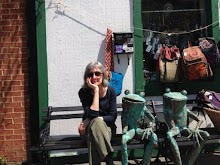How would you answer this question: What do a sukkah, a turn-of-the-century tenement slum, and a home in the Boston suburbs all have in common?
Recently, our temple children were exploring comparisons between the sukkah mentioned in Torah, immigrant living conditions at the turn of the 20th century, and the children’s own sense of security in their homes. David and I shared with them some ancient rabbinic musings about the sukkah, in which it was suggested that God’s protective presence (symbolized by the “cloud of glory” which accompanied the Israelites in the desert) was the real shelter.
To give a sense of the sort of protective presence being suggested by the rabbis, we posed to the children this question: Do you feel differently being in your home when a parent is home versus when you are home alone? The younger children all spoke of feeling a greater sense of security and safety when there was a parent in the house. Many of the older children expressed a sense of freedom and greater relaxation when alone in their homes!
How do you understand the difference in their responses? What connections would you make between their responses and the symbolism of the sukkah?
D’var acher / another thing: While not all Jewish immigrants started out on the Lower East Side, most did – and they climbed up and out as quickly as they could. Check out this recent book review for a peek at that experience.
Recently, our temple children were exploring comparisons between the sukkah mentioned in Torah, immigrant living conditions at the turn of the 20th century, and the children’s own sense of security in their homes. David and I shared with them some ancient rabbinic musings about the sukkah, in which it was suggested that God’s protective presence (symbolized by the “cloud of glory” which accompanied the Israelites in the desert) was the real shelter.
To give a sense of the sort of protective presence being suggested by the rabbis, we posed to the children this question: Do you feel differently being in your home when a parent is home versus when you are home alone? The younger children all spoke of feeling a greater sense of security and safety when there was a parent in the house. Many of the older children expressed a sense of freedom and greater relaxation when alone in their homes!
How do you understand the difference in their responses? What connections would you make between their responses and the symbolism of the sukkah?
D’var acher / another thing: While not all Jewish immigrants started out on the Lower East Side, most did – and they climbed up and out as quickly as they could. Check out this recent book review for a peek at that experience.
